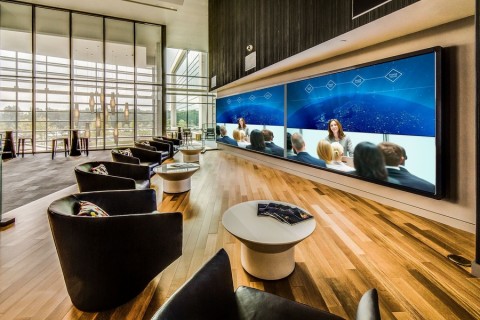When setting up audio-visual installations, the criticality of wiring and connectivity is vital. Effective wiring not only ensures that sound and image quality are maintained but also guarantees the stability of the overall system. In any AV setup, whether for a school, corporate space, or home theater, optimizing the network cabling can lead to enhanced performance and fewer technical glitches. This article will explore key strategies for enhancing wiring and interfacing in AV systems.
The initial step in optimizing media setups is to choose the suitable cables for the application. Different types of cables perform specific purposes, so selecting compatible ones is essential. For example, HDMI cables are common for transmitting high-definition video and sound signals. In contrast, balanced audio cables like XLR can eliminate signal noise in sound systems. It is important to assess the span and grade of these cables, as longer cables can lead to signal deterioration. By investing in professional-grade cables that suit the specific needs of the AV design, users can dramatically enhance total performance.

Another essential strategy is structuring the wiring efficiently. A systematic wiring system not only looks cleaner but also enhances functionality. Using cable management solutions like clips, ties, or sleeves can assist arrange wires tidy and avoid tangling. This layout also makes it easier to diagnose any issues that may emerge. Labeling each cable according to its function or connection point can reduce time during repairs or repairs. A logical layout helps technicians readily identify connections, which is especially beneficial in large-scale systems with multiple devices.
Additionally, click for info analyzing the design of the room is vital for optimizing connectivity. The placement of components can impact additional resources how signals move through cables. Installing devices too far apart may require longer cables or signal boosters, which can be costly and degrade quality. It is advantageous to design the organization of equipment carefully, taking into account the distance between devices and potential barriers such as walls or furniture. This optimized placement can minimize issues related to signal loss and improve transmission throughout the AV system.
Regular system inspections are another critical strategy for supporting optimal performance of AV cabling and system integration. Over time, cables may become frayed due to handling or aging. Periodically inspecting all connections helps catch potential problems before they worsen into serious issues. Upgrading worn-out cables and cleaning connectors can preserve signal quality and guarantee the system runs smoothly. Maintaining a checklist for routine maintenance can help users manage this aspect of their AV infrastructure.
Finally, staying informed about emerging developments and guidelines is important for anyone managing AV systems. The field is constantly advancing with improvements in technology that can elevate connectivity and functionality. Joining seminars, reviewing industry resources, or networking through professional groups can provide valuable insights into best practices and latest tools currently offered. By leveraging these innovations and applying them to legacy systems, users can enhance their AV setups continuously while ensuring they remain current with industry trends.
In summary, optimizing wiring and connectivity in AV systems involves careful selection of cables, effective organization, thoughtful space layout planning, routine maintenance checks, and keeping informed on emerging technologies. By applying these methods, users can attain improved performance and reliability in their audio-visual setups, ultimately resulting in a more seamless experience for everyone engaged.